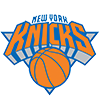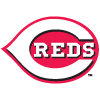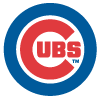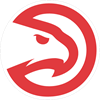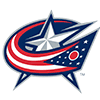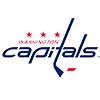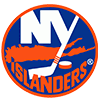Last week, the RotoWire Staff Keeper League (or rather, the original Staff Keeper League since there are two others now) wrapped up its auction. A couple of the other people in the league – Chris Liss and two-time defending champ Ryan Rufe – have already offered their thoughts on how things went, but I want to use the proceedings as a jumping-off point to discuss some more general auction tips and strategies that are applicable specifically to keeper and dynasty leagues.
As background: it's a deep 18-team 5x5 mixed roto league with standard $260 auction budget, $100 FAAB budget, and overall $360 salary cap. Once the auction is completed, there's a 17-round combined reserve/minors draft – 10 minor leaguers, seven reserve players. Inflation is rampant (I had it pegged at 49.2 percent, up a bit from 2018's 45.0 percent but still down from 2017's dizzying 57.4 percent) since players selected as minor leaguers all uniformly have a $3A contract that kicks in the season after they exceed 20 games played in the majors. (For instance, Austin Hays – who played exactly 20 games in 2017 – was not only still eligible to be drafted as a minor leaguer this year, if he does break out for the O's he'll have a $3A contract if he's kept in 2020, and be usable as a $0 player in 2019 if he's activated from his minors roster slot.) Reserve contracts have a similar structure -- $0 players the year they are drafted, $5A
Last week, the RotoWire Staff Keeper League (or rather, the original Staff Keeper League since there are two others now) wrapped up its auction. A couple of the other people in the league – Chris Liss and two-time defending champ Ryan Rufe – have already offered their thoughts on how things went, but I want to use the proceedings as a jumping-off point to discuss some more general auction tips and strategies that are applicable specifically to keeper and dynasty leagues.
As background: it's a deep 18-team 5x5 mixed roto league with standard $260 auction budget, $100 FAAB budget, and overall $360 salary cap. Once the auction is completed, there's a 17-round combined reserve/minors draft – 10 minor leaguers, seven reserve players. Inflation is rampant (I had it pegged at 49.2 percent, up a bit from 2018's 45.0 percent but still down from 2017's dizzying 57.4 percent) since players selected as minor leaguers all uniformly have a $3A contract that kicks in the season after they exceed 20 games played in the majors. (For instance, Austin Hays – who played exactly 20 games in 2017 – was not only still eligible to be drafted as a minor leaguer this year, if he does break out for the O's he'll have a $3A contract if he's kept in 2020, and be usable as a $0 player in 2019 if he's activated from his minors roster slot.) Reserve contracts have a similar structure -- $0 players the year they are drafted, $5A contracts if they're protected the following season.
Here's how I prepared for the auction, and some approaches and tactics I used during it:
Know Where You Stand
I can't stress this enough. In keeper and dynasty leagues, even if you do nothing else to prepare, you need to know going into your auction or draft whether you expect to compete for a title, or are rebuilding.
In the former case, floor becomes a lot more important than ceiling. If you head into the auction with a championship core of keepers, you simply need to assemble a solid supporting cast around that core and not mess things up. That often results in a more balanced spending approach, where you hunt for solid buys in the middle tiers of the available talent, and picking up "safe" veterans rather than volatile youngsters becomes a lot more appealing. If you're rebuilding, upside becomes a lot more important. Finding players who can become part of your next championship core is goal No. 1, which usually leads to a stars and scrubs auction strategy, where you acquire stars who can be flipped for your talent, and cheap scrubs who have breakout potential.
The method I use to try and determine which path I'm taking involves me estimating how much projected value I'm likely to emerge from the auction with, and how it stacks up against the rest of the league.
Step 1: Add up the projected value, and the actual salaries, of each team's keeper lists. Determine the overall inflation rate of the league from this (total of everyone's remaining budgets divided by the total projected value of the remaining talent.)
Step 2: Determine how much value each team's remaining auction budget will actually add to their roster (auction budget divided by inflation rate). Add it to the projected value of each team's keepers.
Step 3: Rank each team by projected value of keepers, projected profit provided by keepers, and total projected value of keepers and auction buys.
The final category – total projected value of keepers plus buys – is the most useful, but if you rank near the top in any of the three, you should be looking to go for a title. If you don't, it's probably worth thinking about rebuilding.
Let's use the Staff Keeper League as an example of how this plays out.
I knew I had a good, but maybe not great, keeper list. I have a lot of cheap, solid values, but no true fantasy studs. My core is built around the likes of Jose Berrios, Joey Gallo, Aaron Hicks and Elias Diaz – good players, all of them with single-digit salaries, but nobody who would be a first-round pick in a redraft format.
Once I ran the numbers, my 15 major-league keepers had a total salary of $97, and were giving me a projected $204 in value, for $107 in profit. In terms of total keeper value, my Wakanda Panthers ranked third of the 18 teams, behind Rufe ($288!) and Clay Link's Diamond Dogs at $247. In terms of profit, though, I was in first, a tidy $19 ahead of Dave Regan's Wheeler in the Sky and $26 ahead of Rufe in third.
Applying the 49.2 percent inflation rate to my remaining auction budget, on average I was expected to emerge with $314 in projected value, good enough for second place behind Rufe's $324. Rounding out the top six (the projected money finishers) were Link at $298, Regan at $292, Peter Schoenke's High-A West Madison at $275 and Shannon McKeown's One Brother One Cup at $267.
Incidentally, that matches up reasonably well with the projected standings our draft software spat out at the end of the auction. It had Rufe in first (waaaaaay in first, to be honest), me in second, Regan in third, Link in fifth, Schoenke in ninth and McKeown in 15th. Jan Levine's Frozen Ropes, who snuck into fourth place in the post-auction projection, was seventh in pre-auction projected value.
Know Where You're Going
While there's still a debate in the fantasy community about the value of setting statistical targets before a draft of auction, in keeper leagues I find it extremely useful. The goal isn't to come away thinking you have a title locked up – as with your keeper list, the goal is merely to ensure you have a competitive core, which then leaves it to your in-season skills (roster management, FAAB acquisitions, trades) and good fortune to put you over the top.
For this 18-team league, I create a weighted average of the last three seasons of fourth-place finishes in each category. Finishing in fourth in 18-team roto gets you 15 points; 15 times 10 (for a 5x5 league) is 150 points in the standings, a total that would put you in the thick of the championship race every year. Again, it's not a question of making sure you necessarily hit all those targets. Because the targets are based on fourth place finishes, there's some potential value in overshooting, which then gives you some leeway to fall a bit short elsewhere.
In keeper leagues with big freeze lists, and especially in deeper dynasty leagues, you have fewer holes to fill in the auction, and fewer available players to fill them with. This reduction in the variables you're dealing with makes it easier to tell whether those targets are even viable for your roster. If you figure out your targets, but can't reach them without having some unlikely bargains fall in your lap, it's another sign that maybe you'd be better off planning for the future rather than going all-in on the current year.
Fewer holes to fill, and fewer variables, also means it's easier to construct actual spending plans. Figure out the likely auction prices (with inflation) for the biggest names, and plug them into your lineup in various combinations. Try passing on the biggest names and hit the next tiers hard. Can you still reach your targets? How much leeway do you have in the endgame to stash a prospect that might not give you any real production in 2019? Examining these scenarios in advance, and knowing how you'd have to construct your roster to make them work, gives you a big leg up heading into the auction proper.
Again, let's look at my Wakanda Panthers. At auction, I had the following positions to fill: one catcher, middle infield, one OF, an additional OF or CI (depending on where Gallo ended up), utility, and three pitchers, and had to make up the following gaps statistically from those spots:

Offensively, I was in decent shape. I was on track in batting average, although I had no margin to add another low-BA guy like Gallo if I wanted to stay that way. From five spots I "needed" 87 homers, 320 RBI, 346 runs, and 34 steals. That was certainly doable. It also suggested that, unless I was going for a surplus, I didn't need to pursue an elite basestealer, and could instead focus on power so long as I picked up a few guys projected for double digits.
On the pitching side, I was in better than decent shape. Slack in ERA and, to a lesser extent, WHIP gave me flexibility in what kind of starting pitching I could chase. A lesser starter on a good team, who had a better outlook for wins but was a risk for sketchy ratios, was certainly on the table. I needed 42 wins, 527 strikeouts and 15 saves from those three spots, which certainly pointed to three SPs being a better idea than a two SP/one closer split, especially given that recent bullpen trends suggest league-wide save totals could be lower anyway, as committees and unpredictable usage (waves at Gabe Kapler) cause more saves to 'slip through the cracks' in fantasy rosters.
Know How To Get There
Armed with that info, and looking at likely auction prices, plan A was to get one stud bat and one ace for about a combined $100 of my $163 budget, try to get one cheap bat and one cheap arm in the endgame as keeper stashes, and spread the other $60-ish dollars among the other three spots. However, I quickly saw one flaw in that plan – there weren't many aces available. The top two pitchers in the player pool were Blake Snell and Carlos Carrasco. After that was a much riskier tier containing only Stephen Strasburg and Clayton Kershaw, then another big drop down to the likes of James Paxton, Masahiro Tanaka and Kyle Hendricks.
Plan A was still the goal, but if pitching prices got too steep, I looked at a plan B – one $50 stud hitter, up to $70 for three of those middle-tier SPs, then the rest spent on hitting. Plan C involved going very cheap in the three pitching spots ($10-$15) and buying two stud hitters for $100 or so, while plan D required buying a high-K closer (which were plentiful, but I loathe paying full retail for saves in keeper leagues. I have cheap Trevor May shares all over the place for a reason.)
In the end, I wound up with some version of plan B.
- Charlie Blackmon $53
- Max Kepler $29
- Yusei Kikuchi $24
- J.A. Happ $22
- Dallas Keuchel $15
- Joey Wendle $11
- Nate Lowe $5
- Kurt Suzuki $4
Those buys (with Ian Kinsler, a reserve pick, in place of Lowe – see below) took my projected totals right around to where I wanted them to be. My hitting totals basically met or slightly exceeded the targets, and while I fell a touch short in pitching counting stats, my ERA and WHIP are projected to more than make up for it.

When Kershaw went for $39 early, I mentally gave up on my first plan, and it's just as well. Snell and Carrasco went for $54 each, while Strasburg went for $47. I couldn't justify it. Keuchel still being unsigned suppressed his bidding and made him an obvious target, which was a good thing too when I had to spend way too much late on Kepler due to "last good bat available" inflation – Mitch Haniger (who I was also bidding on) went for $30 right before Kepler, and Jackie Bradley went for $24 right afterwards. 20/20 hindsight says I would have been much better off pushing a little higher on Andrew McCutchen, who went for $22 earlier in the proceedings, or tried harder for Justin Upton (whose bidding stalled out at $29), but at least Kepler has some smidge of theoretical breakout potential.
I was content, if not overjoyed, with Blackmon as my big bat. He should still provide excellent 4.5-category production, and he doesn't look out of place compared to other prices in that range (Nolan Arenado and J.D. Martinez at $61, Paul Goldschmidt and Jose Altuve at $53, Manny Machado at $50).
With the stud hitter in the OF and not my MI spot, Wendle became a target I liked a lot, and I was happy to get him at $11. His position flex (2B/3B) meshes well with Gallo's 1B/OF in my CI spot, and also with the likely position flex I'll have at Ut. Lowe slots in there for now – getting him for my last $5 as an endgame keeper stash, when Pete Alonso went for a massive $17 in earlier bidding, was a relative coup, and he'll be replaced in my Opening Day lineup by a reserve pick like Kinsler, or maybe Brandon Drury.
The Lowe buy also brings up one of my favorite keeper auction tactics – recognizing when the bottom drops out of the player pool and it's time to buy prospects, rather than present-day assets.
At a certain point in the auction endgame, the available talent at a particular position becomes fungible. In this auction, that point for me came after I got outbid on Nick Markakis, then Kevin Pillar. I would have been fine with either of them giving me solid numbers from my Ut spot, but after they were gone, none of the veteran names left seemed particularly appealing. Certain players offered different skills (extra position flex, speed vs. power etc.), but in general adding one seemed like it would have the same impact as buying any of the others. Since that was the case, and the league has a fairly deep enough reserve list... why spend auction dollars on any of those boring vets at all? Even if you're planning on being competitive, if there's no effective difference between that endgame buy and the production you'd get from a reserve pick, you're much better off using that active roster slot to acquire a prospect. If they pan out immediately, great! If they don't, they're just one more asset you can flip in a trade during the season in your quest for a title. Hence, I threw out Lowe with my max $5 bid, and got the equivalent of an extra first-round minor-league pick without losing any meaningful 2019 production.
Even when you have every incentive to focus on the short term, there's always a little wiggle room in your planning for some nod towards the future.










